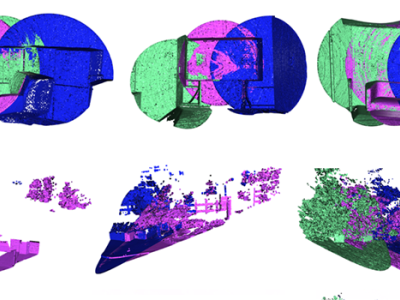
- Categories:


In this dataset we release the data of a sequence of boxes that go through a physical binary sorter that acts as a load balancer between warehouses. This particular physical binary sorter works in real-time operating 4.5 million boxes per year. This is a particular example for a company with hundreds of \textit{physical binary sorters} that are central to the internal logistics of the business.

As the world increasingly becomes more interconnected, the demand for safety and security is ever-increasing, particularly for industrial networks. This has prompted numerous researchers to investigate different methodologies and techniques suitable for intrusion detection systems (IDS) requirements. Over the years, many studies have proposed various solutions in this regard, including signature-based and machine learning (ML)-based systems. More recently, researchers are considering deep learning (DL)-based anomaly detection approaches.

This dataset comprises high-resolution imaging data of biological porcine, clinically approved porcine and bovine, and chick embryo heart tissues. The dataset includes comprehensive anatomical and structural details, making it valuable for research in cardiovascular biology, tissue engineering, and computational modeling. The porcine and bovine heart samples are clinically approved, ensuring relevance for translational and preclinical studies. The chick embryo heart data provides insights into early cardiac development.

This dataset is the outcome of an observation on Millet traits under seed coating and covering. For covering we rely on Germination Percentage (FGP), Germination Index (GI),Mean Germination Time (MGT), Seedling Length( SL) and Seedling Vigour Index (SVI) and Abnormal Seedling have been measured. Moreover, different enzyme levels including catalase, peroxidase, and Malondialdehyde (MDA) are measured.



These are tight pedestrian masks for the thermal images present in the KAIST Multispectral pedestrian dataset, available at https://soonminhwang.github.io/rgbt-ped-detection/
Both the thermal images themselves as well as the original annotations are a part of the parent dataset. Using the annotation files provided by the authors, we develop the binary segmentation masks for the pedestrians, using the Segment Anything Model from Meta.
All masks are present as grayscale binary png files, having pixel values 255 (for the relevant masks) and 0 (everything else).

Livox-3DMatch contains 11 scenes with 33 scans. Livox-3DMatch augments the original 3DMatch training data from 14,400 pairs to 17,700 pairs (a 22.91% increase). By training on this augmented dataset, the performance of the SOTA learning-based method SGHR is improved by 2.90% on 3DMatch,4.29% on ETH, and 22.72% (translation) / 11.19% (rotation) on ScanNet.

Efficient and realistic tools capable of modeling radio signal propagation are an indispensable component for the effective operation of wireless communication networks. The advent of artificial intelligence (AI) has propelled the evolution of a new generation of signal modeling tools, leveraging deep learning (DL) models that learn to infer signal characteristics.